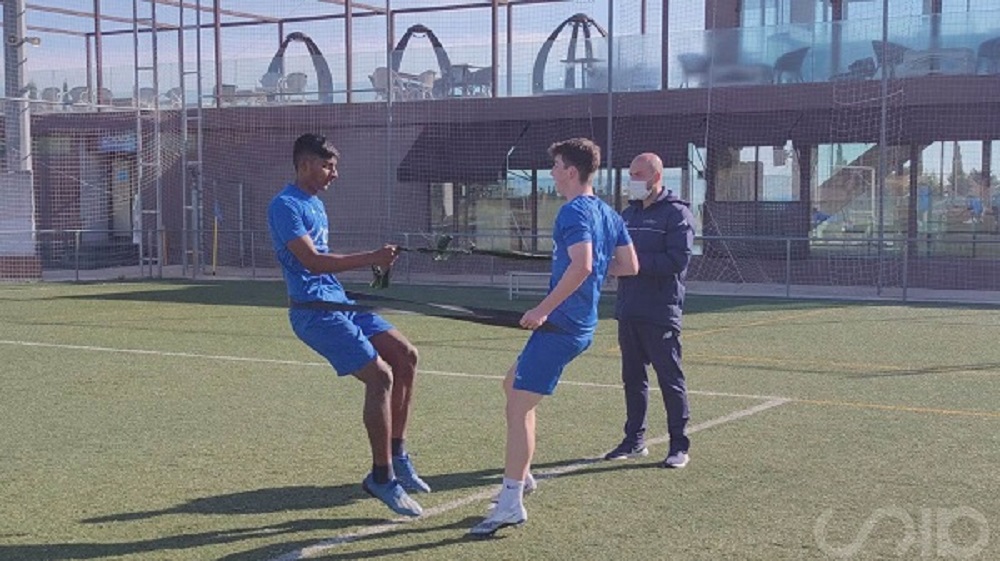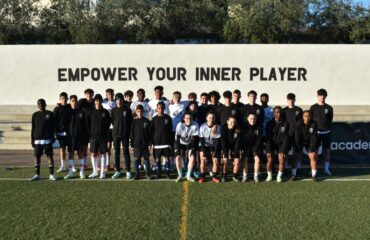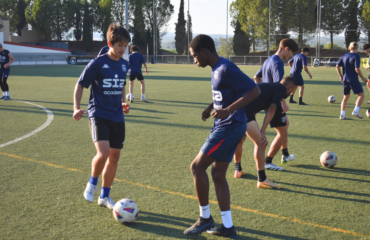What is adjuvant training?
Adjuvant training are the practices that allow the athlete to not only enjoy a state of achievement and protection of their health that enables them to perform the tasks proposed by their training every day (Seirul-lo Vargas, 1986; Seirul-lo Vargas, cited in Romero and Tous, 2010),
but also to optimise those components, structures and systems that each speciality requires and that facilitate and bring the athlete closer to the desired level of performance (Cos, 2017).
Adjuvant training tries to improve the player to be able to train in better conditions through its link with health (prevention) and with aspects related to the optimisation of performance (structural training, training of specific qualities or recovery).

The keys to adjuvant training for the soccer player
From here, we have the four fundamental pillars of adjuvant training:
- Structural training (anatomical adaptation, applied hypertrophy or metabolic).
- Preventive training.
- Restorative training.
- Specific qualities training (movement, fighting, jumping or actions with the ball).
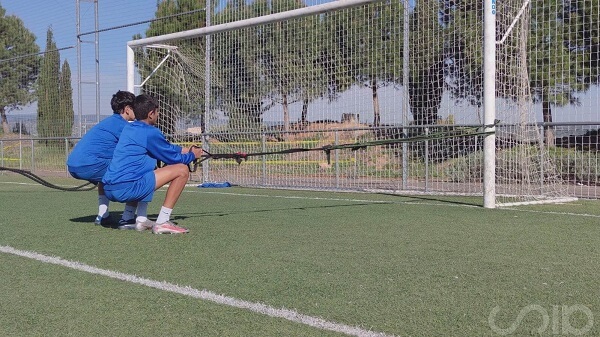
Structural adjuvant training
Structural adjuvant training is related to the formation or modification of the player’s body according to age, gender and time of practice with the aim of increasing performance by achieving an optimal balance between lean mass and fat mass.
Types of structural adjuvant training
We could classify this type of training according to its orientation. (Gómez, Roqueta, Tarragó, Seirul-lo & Cos, 2019). On the one hand, in training aimed at increasing muscle mass, we find:
- Coadjuvant structural training for anatomical adaptation: Taking into account the physiological configuration of the human body, this type of training contributes to conditioning the connective tissues related to joint stability and mobility.
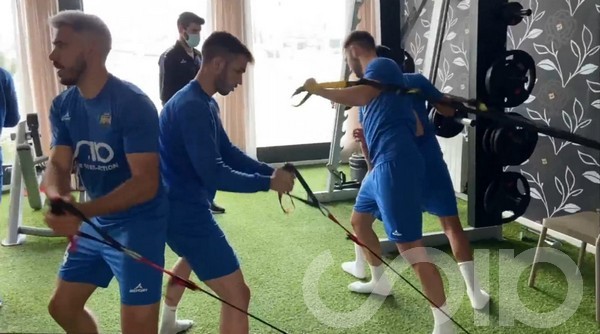
- Structural adjuvant training for applied hypertrophy: This consists of developing the player’s muscle-tendon structures with the aim of increasing the percentage of muscle mass appropriate to individual
- needs, the sporting speciality and its demarcation. The aim is to achieve optimal hypertrophy that accompanies the development of the explosive strength manifestations (Badillo et al., 2017; Young, 2006) necessary in football.
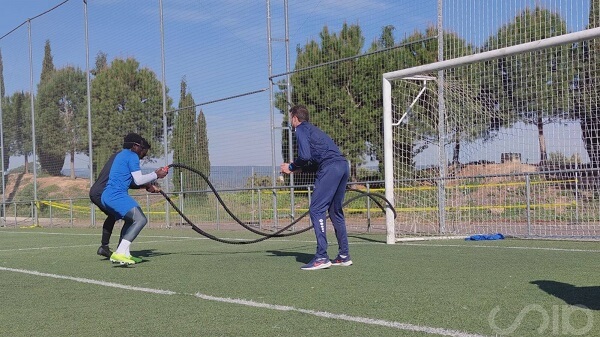
Training work guidelines aimed at increasing muscle mass would be a frequency of 2 to 3 days per week (post-training) with a work volume between 15 and 20 minutes and divided by muscle groups. In addition, the loads to be used should be low or medium (40-70% 1RM) with a high execution speed. (Gómez, Roqueta, Tarragó, Seirul-lo & Cos, 2019).
On the other hand, in training aimed at activation or fat percentage reduction:
- Metabolic structural adjuvant training: This consists of alternating very high-intensity stages with periods of variable recovery. To temporarily raise the metabolic rate and consequently increasing caloric consumption. (Gómez, Roqueta, Tarragó, Seirul-lo & Cos, 2019).

Training work guidelines aimed at activation or fat percentage reduction would be a frequency between 1 and 2 days per week (pre or post-training) with a work volume between 8 and 12 minutes. Use the AMRAP method (maximum possible repetitions) involving all the muscle groups with a work and rest ratio in seconds of 10 – 10, 15 – 10, 15 – 15, 20 – 15, 20 – 15, 20 – 10, etc. (Gómez, Roqueta, Tarragó, Seirul-lo & Cos, 2019).
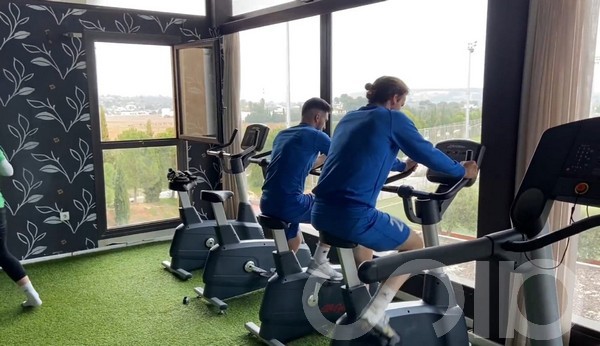
Badillo, J. J., Sánchez, L., Pareja, F., & Rodríguez, D. (2017). La velocidad de ejecución como referencia para la programación, control y evaluación del entrenamiento de fuerza. Madrid: ERGOTECH
Cos, F. (22 de marzo de 2017). Barça Innovation Hub Presentation, Performance area, 22-30 min. Recuperado de https://www. fcbarcelona.com/en/videos/777006/barca-innovation-hub-full-presentation
Gómez, A., Roqueta, E., Tarragó, JR., Seirul·lo, F. & Cos, F. (2019). Entrenamiento en deportes de equipo: el entrenamiento coadyuvante en el FCB. Apunts. Educación Física y Deportes, 138, 13-25



